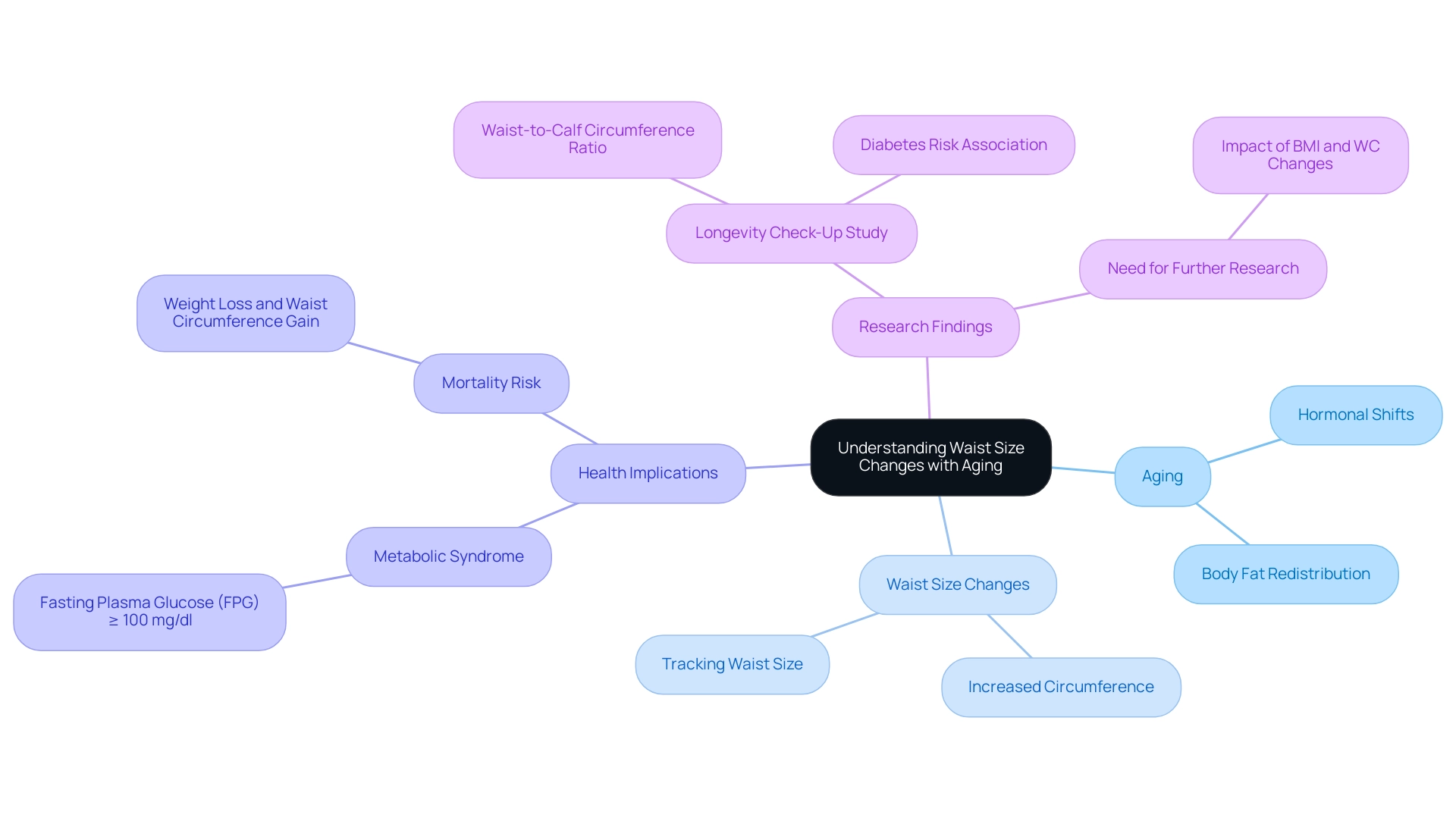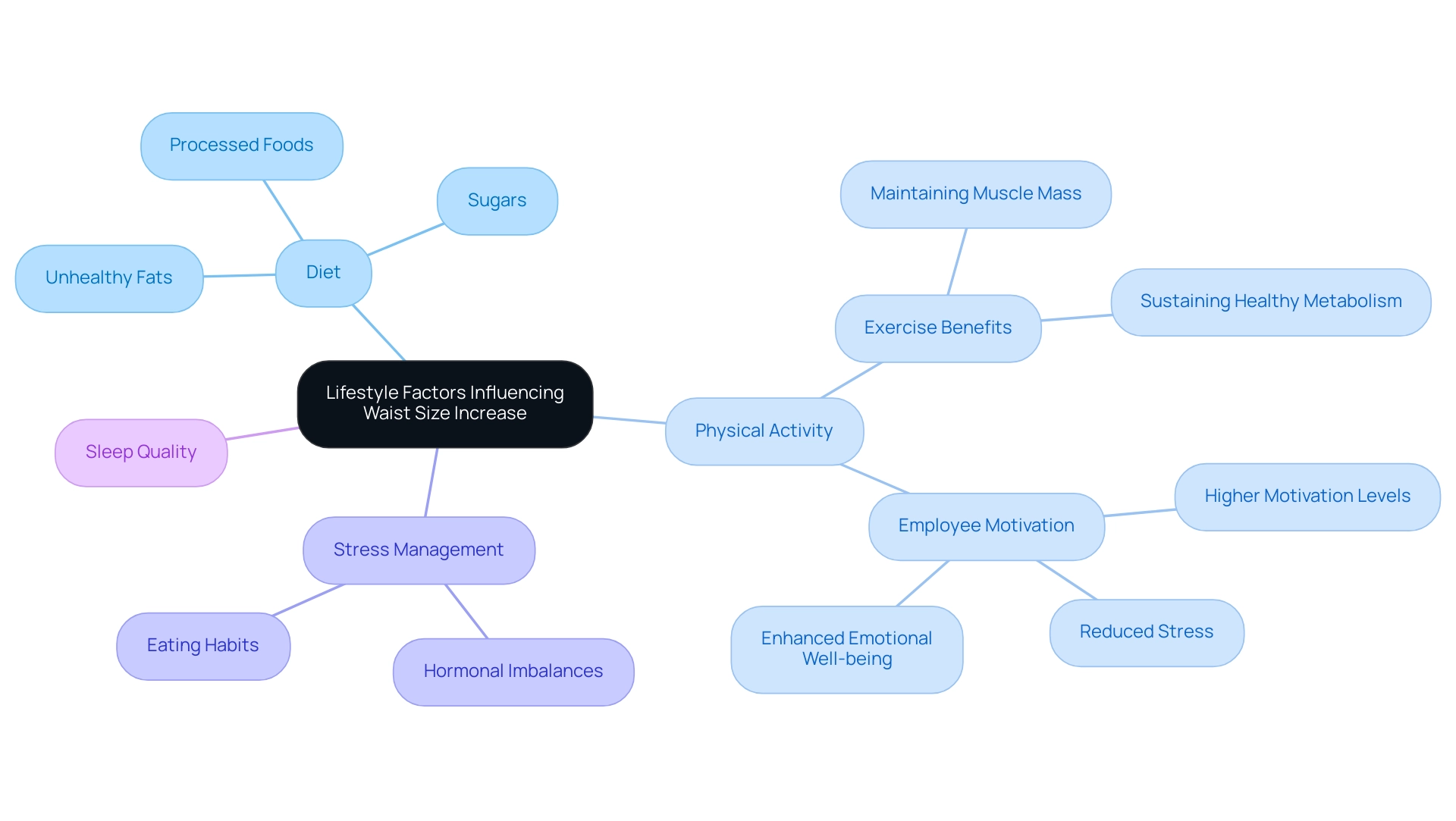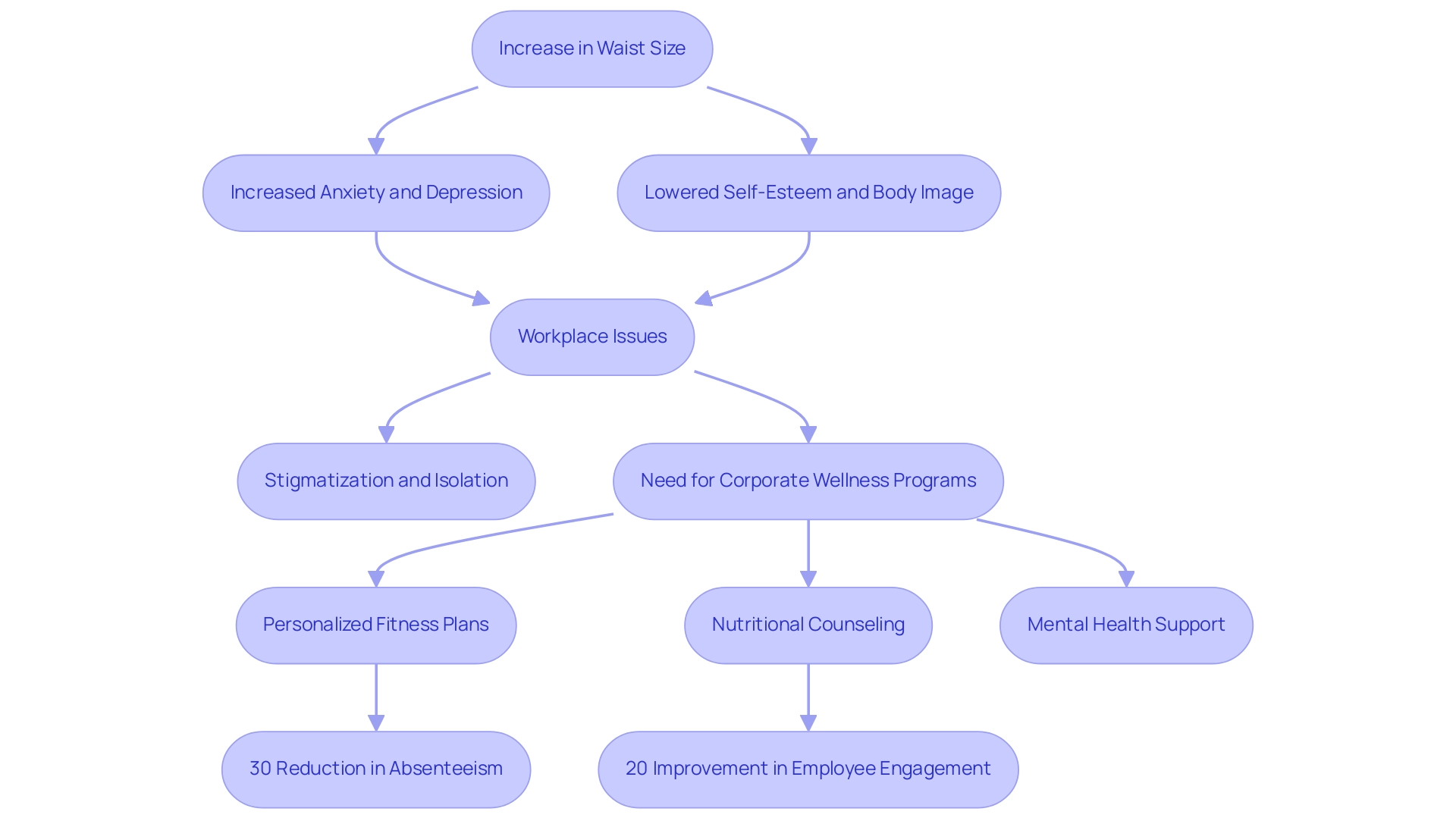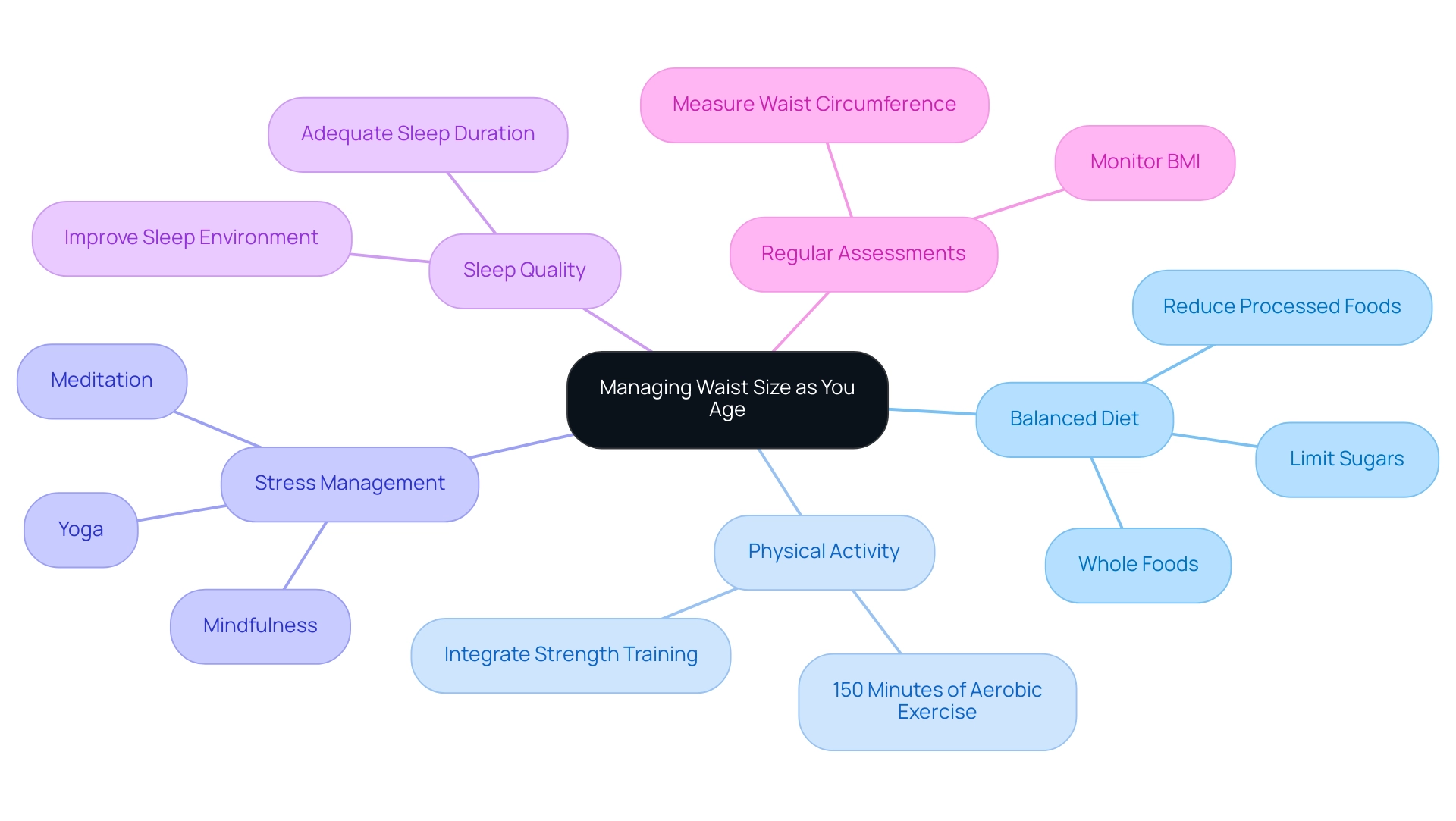Overview
Waist size tends to increase with age due to hormonal changes that redistribute body fat towards the abdomen, which is linked to significant health risks such as metabolic syndrome. The article emphasizes the importance of monitoring waist circumference as a health indicator and suggests that lifestyle factors, including diet and physical activity, play a crucial role in managing waist size as individuals age.
Introduction
Aging is a journey filled with changes, many of which can significantly impact an individual's health and well-being. Among these transformations, the increase in waist size stands out as a critical marker that warrants attention. As hormonal shifts lead to the redistribution of body fat, understanding the implications of a growing waistline becomes paramount—not just for personal health but also for fostering a supportive workplace environment.
This article delves into the multifaceted factors influencing waist size changes, from lifestyle choices and psychological impacts to actionable strategies for management. By equipping HR Benefits Managers with vital insights and resources, organizations can champion the health of their teams, ensuring that well-being remains a priority as they navigate the aging process.
Understanding Waist Size Changes with Aging
Aging brings about a myriad of physiological changes that lead to the question of whether waist size increases with age. Hormonal shifts are especially significant in exploring whether waist size does increase with age, as they can cause a redistribution of body fat towards the abdomen, resulting in increased midsection circumference. This increase is not merely a cosmetic concern; it has serious health implications.
Research indicates that a larger midsection measurement is closely linked to a heightened risk of metabolic syndrome (Mets), which encompasses conditions such as hypertension, elevated blood sugar levels, and abnormal cholesterol profiles. Notably, a recent study revealed that among middle-aged and older Chinese adults, weight loss coupled with an increase in circumference significantly escalates mortality risk. Additionally, fasting plasma glucose (FPG) levels of ≥ 100 mg/dl are included in the Mets diagnostic criteria, emphasizing the significance of tracking abdominal circumference as a crucial wellness indicator.
Comprehending these changes is crucial for both individuals and health specialists, as it highlights the significance of tracking body size to determine if waist size does increase with age as a key health indicator. Findings from the Longevity Check-Up study illustrate that the ratio of midsection to calf size acts as a unique and efficient indicator for determining diabetes risk, highlighting its predictive power beyond body size alone. As observed by Y.H., who edited the paper, there is an urgent requirement for additional research on the effect of BMI and girth changes on metabolic syndrome occurrence.
Equipped with this knowledge, HR Benefits Managers can take proactive measures in promoting awareness and wellness initiatives within their teams, ensuring that they prioritize well-being as they age.

Lifestyle Factors Influencing Waist Size Increase
As individuals age, numerous lifestyle factors significantly influence body size, raising the question of whether waist size does increase with age, making awareness and proactive management essential. Diet plays a critical role; consuming high levels of processed foods, sugars, and unhealthy fats is closely linked to weight gain and increased abdominal fat. In fact, abdominal obesity associated with insufficient physical activity has been shown to contribute to 2.0% of cancer cases within the UK Biobank, illustrating the serious implications of these choices.
Moreover, failing to adhere to WHO recommendations for body measurement and physical activity can result in a combined 15% increased cancer risk, contributing to 2% of total cancer cases. Physical inactivity is another key risk factor; regular exercise is vital not only for maintaining muscle mass but also for sustaining a healthy metabolism, both crucial for effective weight management. Studies have shown that employees who engage in regular exercise report higher motivation levels at work, reduced stress, and enhanced emotional well-being, leading to improved workplace performance.
As noted by McTiernan Katzmarzyk in 'Physical Activity in Cancer Prevention and Survival: A Systematic Review,' physical activity is essential for reducing risks and enhancing cognitive abilities. Furthermore, the case analysis titled 'Importance of Abdomen Circumference and BMI' emphasizes that abdomen circumference is a valuable indicator for evaluating weight and related risks, stressing the necessity to track these metrics. Stress and inadequate sleep further exacerbate these issues, often leading to poor eating habits and hormonal imbalances that encourage fat storage.
By addressing these lifestyle factors through healthier dietary choices, consistent physical activity, and effective stress management strategies, individuals can successfully manage their body measurements and understand if waist size does increase with age. Foresight Health Coaching offers tailored programs for both individuals and corporate groups, emphasizing personalized fitness coaching and wellness workshops through an app-based delivery system. This proactive approach not only improves personal well-being but also significantly reduces the associated health risks of aging, creating a healthier workforce for the future.

The Psychological Impact of Waist Size Increase
The connection between growing midsection dimensions and psychological well-being cannot be overstated. Research indicates that many individuals wonder if waist size increases with age, as increasing waist measurements are associated with heightened anxiety and depression, severely impacting their self-esteem and overall body image. This is particularly concerning in the U.K., where high obesity rates are prevalent in Central and Northern regions, with Southern Wales reporting some of the highest figures, exacerbating these psychological challenges.
These issues often spill over into the workplace, where stigmatization of body dimensions can foster a culture of isolation and diminish employee morale. However, by implementing tailored corporate wellness programs from Foresight Health Coaching, such as:
- Personalized fitness plans
- Nutritional counseling
- Mental health support
organizations can address these challenges head-on. A case study titled 'Suicidal Ideation and Bariatric Surgery' highlights the concerning trend of increased suicidal thoughts among individuals post-surgery, despite the general positive relationship between weight loss and psychosocial functioning.
This underscores the necessity for organizations to foster an environment of body positivity and mental wellness. By prioritizing initiatives that offer personalized counseling and wellness programs, companies can significantly aid employees in navigating the psychological hurdles associated with the question of whether waist size does increase with age. For instance, organizations that have adopted Foresight's programs report:
- A 30% reduction in absenteeism
- A 20% improvement in employee engagement scores
This proactive approach not only promotes individual well-being but also enhances workplace performance and engagement. As David B. Sarwer from the Center for Obesity Research and Education notes, the psychological implications surrounding obesity are complex; addressing these issues is vital for fostering a supportive and productive work environment. By creating a culture where employees feel valued and supported through Foresight's wellness programs, organizations can cultivate both personal and professional growth, leading to a vibrant, focused team that thrives in performance.

Strategies for Managing Waist Size as You Age
To effectively manage body size as you age, it's essential to consider whether waist size does increase with age and adopt a multifaceted approach that integrates several key strategies. Begin by embracing a balanced diet filled with whole foods, such as vibrant fruits, nutrient-rich vegetables, whole grains, and lean proteins, while consciously reducing processed foods and sugars. This dietary change aids in body management and improves overall well-being.
As emphasized by Pischon, the risk of death rises considerably with abdominal size, underscoring the necessity for effective management strategies regarding this area. Equally important is prioritizing regular physical activity; aim for at least 150 minutes of moderate aerobic exercise each week. Integrating strength training is essential, as it assists in preserving muscle mass, which is important for metabolic functioning.
Our wellness coaching app centralizes all the tools and resources you need, offering personalized workouts and daily programming to keep you on track and engaged. Notably, two-thirds of the studies conducted on this topic were cluster-randomized trials, underscoring the importance of evidence-based approaches. Furthermore, don't overlook the significance of stress management techniques, including mindfulness, yoga, or meditation.
These practices can effectively mitigate the stress-related weight gain that often leads to the concern of whether waist size does increase with age. Lastly, ensure that you are getting adequate sleep, as research indicates that poor sleep quality is directly linked to weight gain and various metabolic issues. The case study promoting the regular assessment of both abdominal circumference and BMI in clinical environments endorses a standardized method for managing body measurements.
By weaving these strategies into your daily routine, along with the support of our health coaching app's direct messaging feature for personalized guidance and community engagement, you empower yourself to take proactive steps in maintaining a healthy waist size, especially considering the question of whether waist size does increase with age, ultimately enhancing your overall well-being and vitality.

Conclusion
Aging inevitably brings changes to waist size, influenced by hormonal shifts, lifestyle choices, and psychological factors. Understanding the implications of a growing waistline is critical, as it not only relates to personal health but also significantly impacts workplace morale and productivity. By recognizing the link between waist size and health risks such as metabolic syndrome, HR Benefits Managers can better support their teams through targeted wellness initiatives.
Addressing lifestyle factors is paramount in managing waist size. Encouraging healthier dietary habits, facilitating regular physical activity, and implementing stress management strategies can lead to significant improvements in employees' physical and mental well-being. Furthermore, fostering an environment that emphasizes body positivity and mental health support can mitigate the psychological challenges associated with waist size increases, ultimately enhancing employee engagement and reducing absenteeism.
Proactive management of waist size through a comprehensive approach is essential for promoting a healthier workforce. By integrating balanced nutrition, regular exercise, and mental wellness programs, organizations can empower their teams to navigate the aging process with confidence. The journey towards maintaining a healthy waistline is not just a personal endeavor; it is a shared responsibility that can cultivate a thriving, supportive workplace culture. Prioritizing these initiatives will not only benefit individuals but will also create a resilient organization ready to face the challenges of tomorrow.




